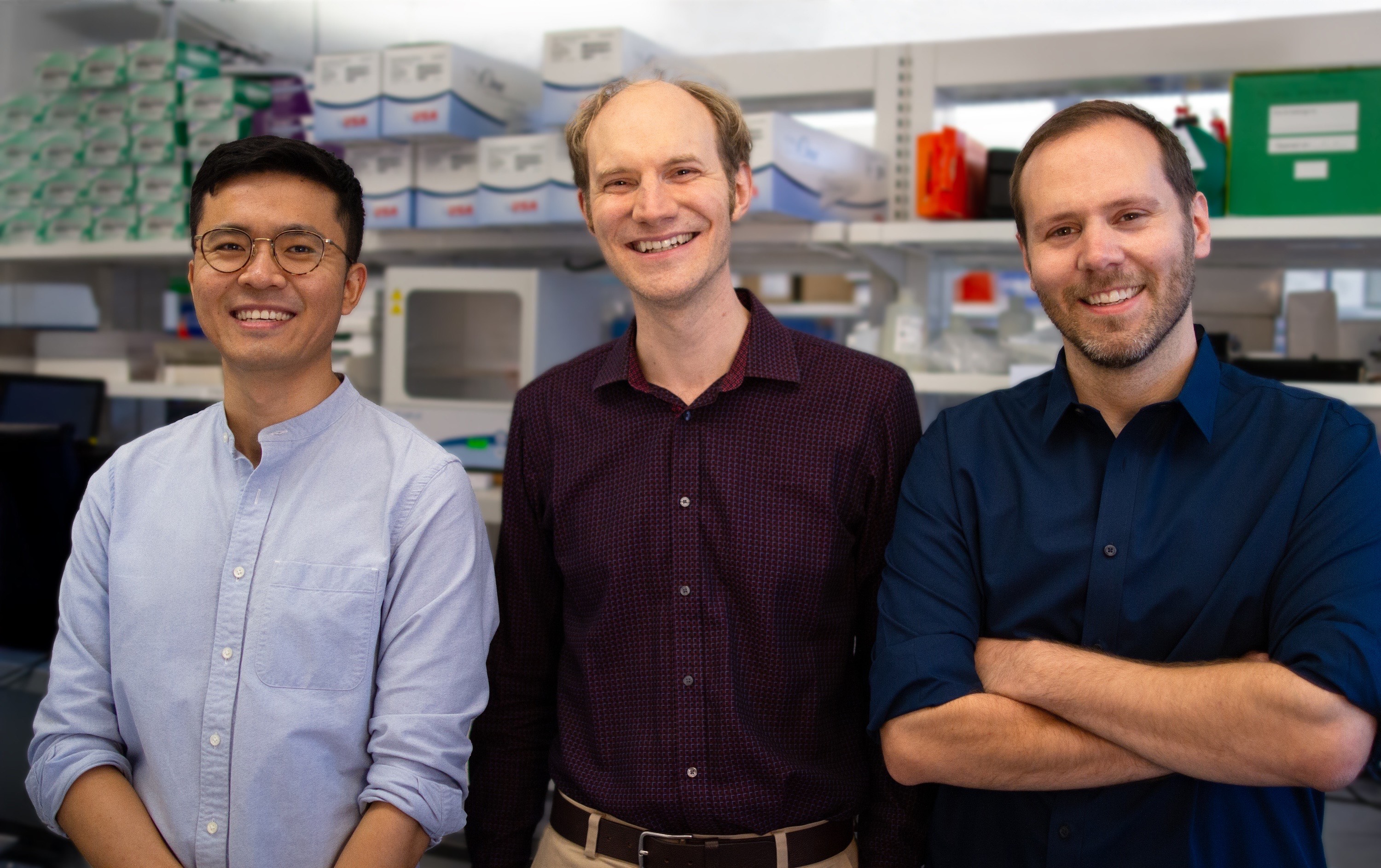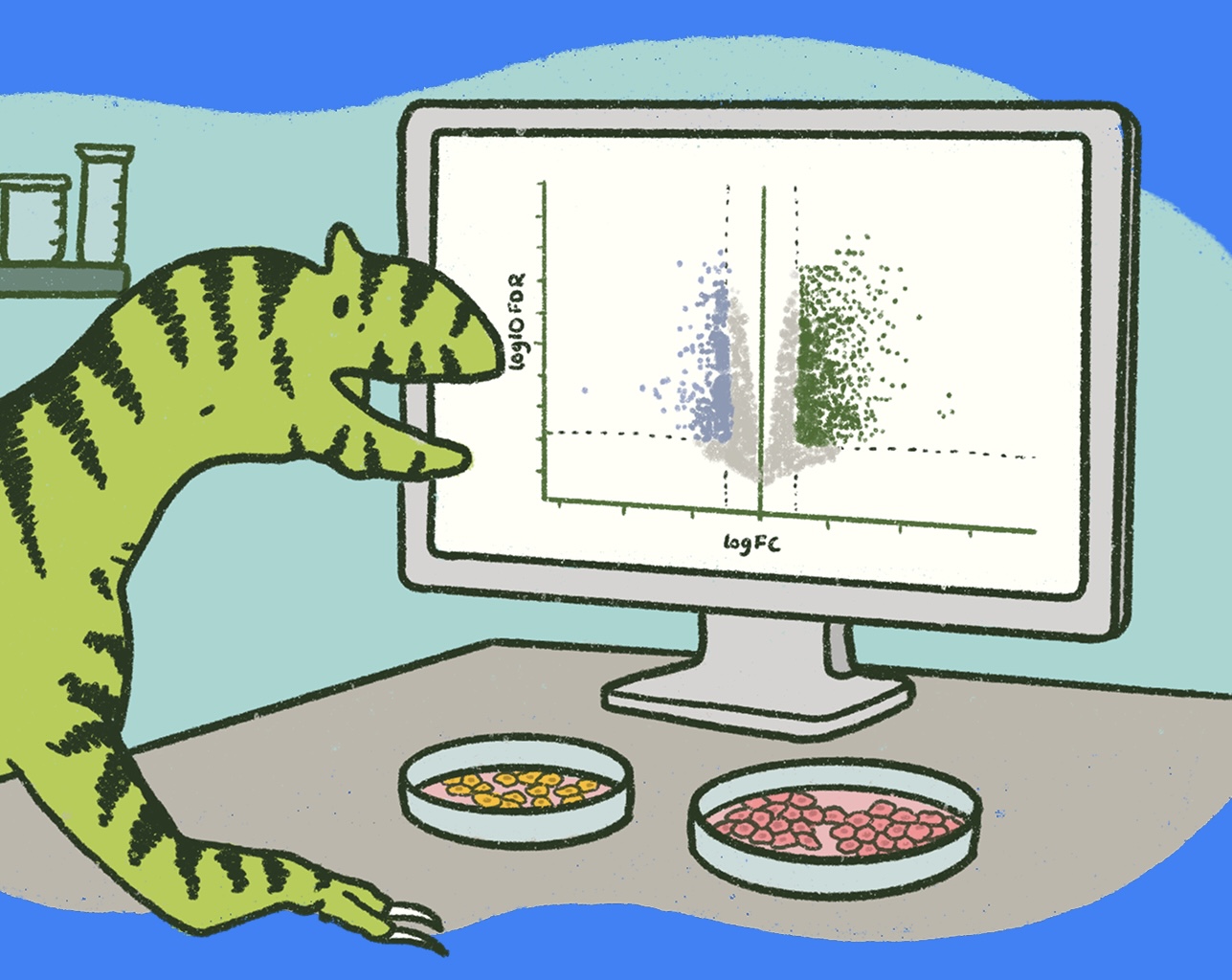Molecular Assemblies: Rewriting synthetic biology with enzymatic DNA synthesis
This content is made possible by Molecular Assemblies, a San Diego based company that aims to fundamentally change DNA synthesis with its enzymatic DNA synthesis technology, enabling new products in industrial synthetic biology, personalized therapeutics, precision diagnostics, data storage, nanotechnology and more. Learn more about Molecular Assemblies’ technologyThe genome era showed us that we can read the book of life — and that has led us to try to write in it as well. But while the rate of DNA sequencing (how we “read”) has accelerated exponentially, our ability to chemically synthesize DNA (how we “write”) has improved far less rapidly. Since its introduction more than 30 years ago, the core technology has virtually stagnated. Consequently, DNA synthesis has not kept pace with the explosive growth in demand for synthetic oligonucleotides—or with researchers’ imaginations.Fortunately, a recently developed (and still developing) method is poised to revolutionize the field. Enzymatic DNA synthesis, which harnesses the power and versatility of biological catalysts, has the potential to increase the length and fidelity of the sequences we make by orders of magnitude, qualitatively enhancing our ability to make our own entries in the book of life. Whereas now we can scribble out only a few short words, soon we may be able to assemble sentences, pages, or even whole chapters.A key driver of this emerging technology is Molecular Assemblies, a San Diego biotech firm founded in 2013. I spoke with President and CEO Michael Kamdar, a 25-year industry veteran focused on building novel technologies, and CSO Bill Efcavitch, who has been involved in the commercialization of DNA synthesis since its inception. They described their company’s approach, the applications of dramatically improved DNA synthesis, and their visions for the future.“In 2013,” a colleague pointed out to me that the synthesis industry was using the same technology that we commercialized in 1983,” Efcavitch recalls. There had been progress in miniaturization, parallelization, and throughput, but the chemistry remained the same. “He said, ‘Don’t you think it’s time for the world to have a new chemistry for DNA synthesis?’ I’d always carried a torch for enzymatic synthesis and believed we could make longer DNA at lower cost.”Kamdar also saw the potential for a new approach in this space. “The thing that inspired me was the broad application for the technology,” he says, citing the value of enzymatic synthesis in the laboratory and clinic, as well as in burgeoning contexts like data storage and nanostructures—all of which we will discuss below. “The number of possibilities in terms of applications is really exciting for me.”

A new enzymatic approach to DNA synthesis could be the next breakthrough in synthetic biology. Source: SynBioBeta.
Where we’ve been all these years
Before we delve into the details of Molecular Assemblies’ approach, let’s briefly review the technology it aspires to replace: the state of the art of DNA synthesis in 2018. As it happens, it’s about the same as the state of the art for the past 30 years: phosphoramidite chemistry.To chemically synthesize an oligonucleotide of length N, the nucleotide that will ultimately be the Nth base in the chain (for example, a G) is coupled to a solid substrate. The substrate is then immersed in a large excess of free nucleotide monomers of the sort that will occupy position N-1 (let’s say A). The A is coupled to the G via a condensation reaction, yielding AG. Importantly, each A in the reaction vessel has been modified with a blocking group on the 3’ position of its deoxyribose group, preventing another A from coming along and joining the chain via the same reaction, and another after that, ad infinitum, yielding …AAAAAAAAAG and wrecking our experiment.After the coupling reaction, the excess free nucleotide is washed away, a phosphite in the backbone is oxidized to a phosphate, the blocking group is chemically removed, and the newborn AG is ready for another round of extension. This cycle is repeated until the chain is complete, at which point the oligo is cleaved from the solid substrate, purified, and used for its intended purpose.That purpose could be one of any number of things. Most commercially synthesized oligonucleotides are used as primers for PCR or sequencing, although some are used in microarray technologies, and still others (usually highly purified and rigorously quality-controlled) are used in clinical diagnostics. Overall, DNA synthesis is a $1.3 billion industry.Phosphoramidite technology works well enough for those purposes but has inherent limitations that prevent it from improving much further. First, the raw synthesis error rate is high, as much as 0.2%, which limits the practically attainable length: once you reach a certain length, any individual oligo is virtually guaranteed to contain an error. That’s fine if the user is OK with an impure mixture, as for PCR, but not in modern contexts like synthetic biology, where even a single-nucleotide difference in a molecule can mean the difference between functional and functionless.Second, newer applications (synthetic biology, gene editing, DNA therapeutics, and DNA nanotechnology) require longer sequences. True, we can make long oligos using phosphoramidite chemistry, but the process is laborious: synthesizing shorter fragments, stitching them together to form a longer strand, filling in the complementary strand, and then performing various kinds of error correction. Compounding the problem, it is especially difficult to use this method for assembly of sequences that contain repetitive regions. Collectively, these issues increase the cost and time required to make long sequences.“The price of individual oligo synthesis has dropped over the years, but for long constructs it remains flat,” Efcavitch explains. “This is because after the synthesis is over, there’s still a lot of work to do.” By contrast, “With enzymatic synthesis, you have to perform fewer ‘touches’ of the material. Every one of those downstream steps that we can eliminate would decrease time and cost.”Finally, but importantly, phosphoramidite synthesis chemistry uses organic rather than aqueous solvents. Because these substances are incompatible with downstream biological applications, chemically synthesized oligos must be extensively purified before use. Moreover, the synthesis reactions themselves create a significant toxic waste stream.

The SynBioBeta SF 2017 panel highlighted the advances in DNA synthesis that have brought the technology forward by leaps and bounds in recent years. Click here to watch the video. This year’s SynBioBeta 2018 will feature sessions, panels and workshops on this topic, register here.
Where we’re heading
To overcome the problems and limitations of chemical synthesis, Molecular Assemblies has returned to the way nature makes DNA: enzymatic catalysis. However, there’s a twist (that’s a helix joke). Remember what we learned in school about A pairing with T and C pairing with G, so that the DNA polymerase knows which nucleotide base to insert next? Good for you; A+. Now, forget all about that for a minute.Molecular Assemblies’ synthesis chemistry uses a rather different enzyme, terminal deoxynucleotidyl transferase (TdT). Unlike the “conventional” DNA polymerases, TdT does not use a template, and is therefore agnostic about which nucleotide it inserts. A, C, G, or T? Yes please!TdT serves its natural function in maturing B and T cells, adding nucleotides between the modular junctions in the genes that encode immune receptors. This intentional mutagenesis — an A here, a CG there — increases the diversity of the antibody and T-cell receptor pool, helping our bodies mount a targeted defense against many different foreign pathogens.In immune cells, TdT is under tight control. By contrast, when left to its own devices (in a test tube, say, surrounded by an abundance of free monomers), it can synthesize homopolymers thousands of nucleotides in length.If we wish to synthesize particular sequences, however, that’s not what we want it to do. Hence, the enzyme’s exuberance must be tamed so that it adds the nucleotides we want, and only those nucleotides, in the correct order.To this end, we introduce the building blocks (deoxynucleotide triphosphates, dNTPs) one kind at a time. If we want to add an “A”, we flood the reaction tube with As and nothing else, ensuring that TdT can only add the correct base. To prevent the enzyme from running away and incorporating a zillion A’s, the new nucleotides are modified with a terminator that prevents chain elongation. As with chemical synthesis, once coupling has taken place, the free dNTPs are washed away, the terminator is removed, and the system is primed for the next round of single-nucleotide addition. Wash, rinse, repeat.If optimistic projections hold true, the new technique could yield a 10–50-fold increase in length and fidelity, allowing synthesis of sequences of more than a thousand nucleotides. Even better, enzymatic synthesis could do the job faster and cheaper than the technology it aims to replace.Currently, most labs outsource synthesis of oligos, in part because of the toxic waste stream. A wide range of companies offer synthesis on demand, but production and shipping take 24–48 hours, and sometimes further processing and purification are required upon arrival. For long oligos, which must undergo post-synthesis assembly and processing, the wait is much longer — as much as two weeks, and at a cost of hundreds of dollars per sequence. These delays and costs add up, limiting the number of oligos a team can test within a given period of time (or on a given budget), ultimately slowing the rate of experimentation.By contrast, the enzymatic method requires no post-synthesis assembly, and the chemistry is aqueous rather than organic, eliminating the toxic waste and obviating the need for certain kinds of purification. These features will yield savings in both cost and time. It may even bring DNA synthesis back to the benchtop in individual labs.“Not to trivialize the importance of platform development, but once we have an optimized chemistry that can achieve long synthesis, automation is straightforward engineering,” Efcavitch says. “Because the chemistry is aqueous, it’s possible that your favorite off-the-shelf pipetting robot could become a DNA synthesizer.”So, we can imagine a future in which DNA synthesis devices that generate waste less noxious than a run-of-the mill bacterial miniprep kit are sitting in a corner of every lab. Such instruments would be akin to “DNA printers,” providing on-demand gene synthesis, decreasing the time from conception to experiment and accelerating research progress.To get us to that point, the company is working to overcome a few well-defined technical hurdles. The most important involves finding ways to better control TdT, which is occasionally a bit too…enthusiastic. As Efcavitch explains, “There are two yield-determining steps to get long molecules: First, incorporation in every round of synthesis needs to be >99.9%. Second, you need a better than >99.9% rate of monoaddition. Right now, for an oligo of length N we get N+1 very efficiently but are still getting traces of N+2.” Potential solutions include optimizing reaction conditions, reconfiguring the blocking technology on the dNTPs, and protein engineering of the enzyme itself.In the meantime, Molecular Assemblies is confident that these challenges can be overcome. “We showed proof-of-concept data at SynBioBeta 2017,” says Kamdar. “We know that our approach to enzymatic synthesis actually works. In addition, we have seven issued patents in the US and EU that support our efforts.”

Bill Efcavitch spoke at SB7.0: The Seventh International Meeting on Synthetic Biology. Watch the video here.
Writing in the book of life: Applications in biology and biomedicine
Enzymatic DNA synthesis clearly represents a quantum leap in our capabilities. But once we can reliably make long oligos, what will we do with them?“The Holy Grail is gene-length fragments, 1000 to 1500 nucleotides,” says Efcavitch. “That’s what has people’s attention.”Enzymatic synthesis could someday enable researchers to make gene-sized pieces of DNA in a single reaction, allowing rapid prototyping while controlling costs. This would be particularly useful in metabolic engineering, where researchers must mix and match regulatory sequences (promoters) with protein-coding DNA—essentially, creating new genes—with the goal of generating novel biochemical networks. Agricultural genetic engineering would also be fertile ground for long fragments.Another major area of application is gene editing. The revolutionary CRISPR/Cas9 system allows us to introduce precise base changes into the genomes of living cells, (mostly) unaccompanied by off-target mutations. The system is reasonably good at directing cleavage of the DNA double helix, but cellular repair of DNA breaks can lead to unwanted results. To recruit higher-fidelity mechanisms, it helps to have a “splint” region of 80–100 nucleotides on either side of the region targeted for editing, making the total length of the donor oligo quite long.Precision medicine and targeted therapeutics will also benefit from the ability to make high-yield, high-fidelity DNA sequences, enabling biomedicine researchers to obtain highly reproducible results in large samples of cells. Overall, it is clear that enzymatic DNA synthesis will facilitate work in a wide range of fields, from test tube to germplasm to clinic.
Beyond biology: Data storage and nanostructures
In the lead of this piece, the “book of life” metaphor was…well…metaphorical. But someday, we may be writing actual books out of DNA,Which books? Conceivably all of them. DNA is an extremely information-dense material: a gram could theoretically store the equivalent of 50 million DVDs (remember those?) and the material is stable for centuries under the right conditions. Moreover, nucleic acid data storage doesn’t require energy-intensive data centers: “DNA doesn’t require electricity,” Kamdar notes.Despite recent proof of principle of DNA storage (e.g., the storage and retrieval of an animated GIF from a bacterial genome), the cost of synthesis per unit of information is still unacceptably high. To make DNA an economically viable storage medium, the expense must be decreased. Moreover, data storage using short oligos requires a large fraction of bases to be spent on addressing and redundancy, decreasing the proportion of sequence that is available for storing interesting data. Enzymatic synthesis could solve all of these problems by decreasing the cost of synthesis, increasing the length of individual sequences (enabling proportionally more of each sequence to be used for data storage per se), and simplifying the data writing system.Kamdar sees the potential market for DNA data storage alone to be an order of magnitude larger than the entire existing DNA synthesis industry. Indeed, interest in this technology is intense, and the US government is currently offering research grants with the goal of developing DNA storage capacity on the exabyte scale.In addition to storing information (today, protein-coding sequences; tomorrow, the extended versions of all three “Lord of the Rings” films), DNA has natural base-pairing capabilities that determine the structure of the molecule. Although we tend to think of DNA as a monotonous linear double helix, it can also form shorter regions with interesting secondary structure, like loops and hairpins. If a sequence is cleverly designed, these smaller components can assemble into larger structural elements, which can in turn be combined into precise nanostructures with specific properties. This directed folding is sometimes referred to as “DNA origami.” Such an approach could be used to drive self-assembly of nanomaterials, develop switches for algorithmic computing, or even to create origami nanobots that deliver drugs specifically to cancer cells.DNA computing and DNA origami both require oligos longer than we can currently synthesize using conventional chemical means. Moreover, informational or structural constraints might require oligos to contain repetitive sequences, making them difficult or impossible to construct by stitching together overlapping short oligos. Thus, by increasing length and fidelity far beyond what is possible today, enzymatic synthesis could revolutionize our ability to use the fundamental molecule of life in industrial applications far outside of what we think of as “biology.” [caption id="attachment_36169" align="aligncenter" width="700"]

Scientists at Molecular Assemblies.[/caption]
Give me an oligo long enough and I shall move the world
As we finished our conversation, Mike and Bill made it clear that the applications of enzymatic DNA synthesis that we can envision today are just the first rumblings of revolution. “When semiconductors were originally invented,” Kamdar says, “they were thought to have a specific utility, but now they’re utilized everywhere. We believe enzymatic DNA synthesis will open doors to new technologies and breakthroughs for our future!”Many of those applications would have been inconceivable to the technology’s pioneers, and the same is likely true of long, cheap, high-fidelity oligos. Arguably, one reason that there aren’t more shovel-ready applications for long single strand oligos is that they simply haven’t yet been available at costs that allow innovators to tinker with them and come up with new ways to use them.“If we can solve this problem, people will think of how to use it,” Efcavitch continues. “That’s a big part of what we’re doing: if we can give people 200, 500, or even 1000-mers, they will come up with applications.”Chuckling, he adds wryly: “This is something we think of as, ‘If you build it, they will come.’”Michael Kamdar will be featured at SynBioBeta 2018 during the “Future of DNA Synthesis” session on Wednesday, October 3. Learn more about Molecular Assemblies’ technology and register for SynBioBeta 2018 today.




.svg)








.jpg)


.gif)